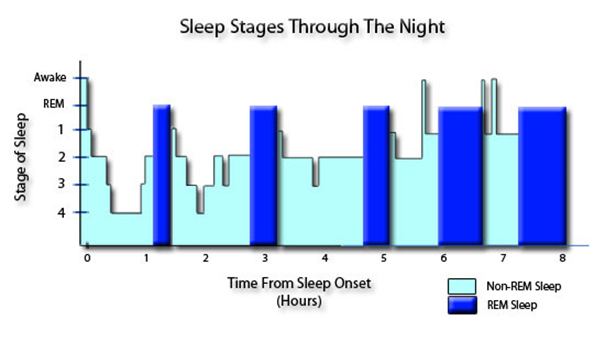Projects:2017s1-157 Automated Classification of Brain Activity during Sleep
Introduction
The aim of this project is to create an automated sleep stage classifier that identifies various stages of sleep based on a test that is recorded via electroencephalogram (EEG). An algorithm will be developed to classify large sets of overnight sleep data into sleep stages. The aim of the project is to achieve an accuracy of 85% when comparing the algorithm results to manual classification.
Project Description
Sleep is a state of reduced consciousness that can be classified into different stages, based on the level of brain activity as recorded via electroencephalogram (EEG). The aim of this project is to develop a automated sleep staging algorithm and validate on a large data set of overnight seep studies, using Matlab. An interest in signal processing, feature extraction and classification as well as sleep is required.
Electroencephalography EEG EEG is an electrophysiological monitoring method to record electrical activity of the brain. There are similar technologies for the same purpose but for different parts of the human body; Electrocardiogram (ECG) for the heart, Electromyography (EMG) for the skeletal muscles. There are number of electrodes surrounding scalp of the subject which send the signal data to the EEG reader to record. Each electrode has its own position and 10 to 20 system internationally standardized to record spontaneous EEG
Electrooculography EOG
EOG is a technique for measuring the standing potential that exists between the front and the back of the human eye. The signal is generated by the retinal pigment epithelial (RPE) layer, a continuous single cell layer under the retina [11].
The electrodes are mainly placing two sides of a single eye, therefore it can recognise the small movement of the eyes with the reference signal which is from the middle of the forehead (refer to the figure 3). The eye movement during sleep is relatively small movement in comparison to the other EEG activities, therefore careful inspection or filtering is required to detect it. EOG signal output will be a crucial evidence to detect REM stage, as its feature is the rapid eye movement.
Electromyography EMG EMG is a technique obtaining data from muscle movement of human body. Different to EOG and EEG, the electrodes of EMG are mainly attached where the muscles are like arms. There are not many parts in human’s head shows movements except chin and eyes. The movements from these two parts are significant sources to find out whether patient is in REM stage or not. Especially, EMG is in charge of obtaining electronic data from chin, the team could combine this data with the other machine electrodes. Data collection from various sources is one method of increasing accuracy from feature extraction by giving the program more opportunity to clarify features of each epoch. From the below figure 6, how EMG signal can be compare with the other signal sources.
Artificial Neural Network
The human brain is an immensely complex system which no artificial intelligence can emulate as the brain consists of nearly 100 billion neurons with septillions of possible connections between them. The structure of the neural network allows a state of consciousness that can process feelings, complex thoughts, pattern recognition and many other functions. Because humans excel at pattern recognition and classification, artificial intelligence can also utilize a neural network but on a much smaller scale to recognize patterns in classification.
In an artificial neural network problem, there is an input layer with values: x_1,x_2…,x_i and an output layer with values: y_1,y_2…,y_i. Between these two layers, there lies multiple hidden layers that consists of artificial neurons, which are connected by weightings which are given a value w_ij while being amplified by a bias or threshold value: θ_ij.
The weights are given a random value to begin with since the network has not yet been exposed to training and adapting. It is likely that the generated outputs will not equal the expected outputs. A back propagation-learning algorithm will be applied to the ANN such that the weights w_ij will be adjusted accordingly for every iteration of the ANN. [21] The main goal for these weight adjustments is that the ANN will be able to eventually predict the expected outputs for all or most inputs. Advantages of an ANN include the simplicity of ANNs and the implementation is easy even if the problem may have more features and classes. An ANN doesn’t need an algebraic linear solver which an SVN have and that means ANN can solve problems which require nonlinear algebraic modelling much better in comparison to an SVN. The main disadvantage of a neural network is that if you want to retrain the network with new data added on to the old one, all data will be lost and the ANN will start again with the new data included.

Project Group Members:
Woojin Jung
Brock Hamann
Project Supervisors
Mathias Baumert
Sarah Anita Immanuel
